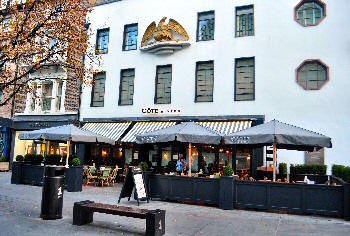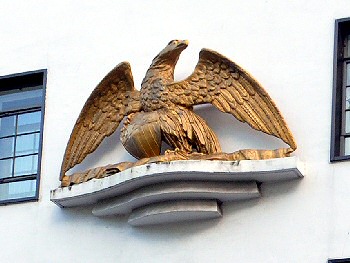Timeline
|
Events
/ Historic Developments
|
More material page or extra link
|
Area
|
1752
|
Britain adopts the new style calendar. |
|
1753
|
British Museum began, by the purchase of Sloane's collection. |
|
1754
|
Liverpool Town Hall Finished. |
|
1757
|
 The
1st Starr Lookers or Starr Setters were appointed to find places to plant the Starr grass. The
1st Starr Lookers or Starr Setters were appointed to find places to plant the Starr grass. |
1759
|
Molly Bushell creates and sells to the public her own Everton Toffee. |
1759
|
Liverpool's Cultural development leads to the 1st theatre in Drury Lane. |
1759
|
Liverpool's Library was the 1st circulating library in Europe. |
1760
|
The population of Liverpool rises to over 25,000 as shipping trade increased
fourfold in 50 years. |
1763
|
1st British Empire at it's height. |
1768
|
Royal Academy of Arts is founded. |
|
1771
|
600 poor were accommodated in a new building on Brownlow Hill as regular expansions of the Workhouse were undertaken. |
|
1775
|
 Formby founds its lifeboat service, probably the
1st in Britain. Formby founds its lifeboat service, probably the
1st in Britain.
|
1790
|
 Liverpool was so important for
transatlantic commerce and a vital trading partner
for the former 13 Colonies in America that it
opened up the 1st overseas consulate on Liverpool,
before London or any Capital City in the world, in
this year! The consulate was founded by the
then fledgling United States of America, on Paradise
Street, Liverpool. It was opened by the
Notable Consul James Maury. His portrait still
hangs today in Liverpool Town Hall. The
Building stood on the quayside of Steers Dock, with the famous
Golden Eagle sculpture above its door. Liverpool was so important for
transatlantic commerce and a vital trading partner
for the former 13 Colonies in America that it
opened up the 1st overseas consulate on Liverpool,
before London or any Capital City in the world, in
this year! The consulate was founded by the
then fledgling United States of America, on Paradise
Street, Liverpool. It was opened by the
Notable Consul James Maury. His portrait still
hangs today in Liverpool Town Hall. The
Building stood on the quayside of Steers Dock, with the famous
Golden Eagle sculpture above its door. |
1792
|
 'Official' Founding of Southport. 'Official' Founding of Southport. |
1793
|
 House of Commons Committee that was petition by Members of the Common Council of the Town of Liverpool to print its very own Currency Notes. House of Commons Committee that was petition by Members of the Common Council of the Town of Liverpool to print its very own Currency Notes. |
1795
|
James Wyatt repairs fire damage to the Liverpool Town Hall, and adds the dome with the figure of Minerva goddess of wisdom to the top. |
1796
|

Liverpool's very own currency was dropped. |
1797
|
A widow from Wigan Mrs. Sarah Walmesley builds the
1st new house in the area of South-Port. Its called:-
'Belle Vue' cottage. |
1798
|
William Sutton builds the South-Port Hotel and Sheltered bathing area, after obtaining the lease to 6 acres of land from Miss Bold. |
1800
|
Population now in the region of 77,000 in Liverpool. |
1800
|
Parliamentary union of Great Britain and Ireland. |
|
1802
|
Bold House rebuilt to house the Bold family so they could take advantage of bathing in the new resort of
'South-Port'. |
|
1803
|
As the Napoleonic war was taking
place, the risk on invasion by the French became a
huge concern nationally. In Liverpool, merchants put
forward an idea to build a Fort on Perch Rock, to
repel any invading French forces. |
|
1803
|
Britain at war with France again, and insurrection in Ireland led by Robert Emmet. |
|
1804
|
Bonaparte becomes Emperor and Spain declares war on England. |
1805
|
Battle of Trafalgar, Nelson's great victory and death. |
1805
|
The Union Hotel built, along with a series of terraces built by Wigan businessmen along Lords Street, Wellington Terrace. |
|
1807
|
MP William Roscoe votes to back the abolishment of slavery in the British Empire, and on his return to Liverpool is met with violence. Most of the people of Liverpool seeing the abolishment of slavery as an end to their happy and profitable existence. |
1811
|
The
newspaper Liverpool
Mercury founded and is thought to be the 1st full newspaper to be printed in the area. |
1813
|
First public sculpture erected, and it's Nelson's Monument. |
1813
|
The 1st private school opens in
what was then known as 'South-Port'. |
1815
|
Battle of Waterloo. |
|
1816
|
 Southport Marine Fund was organised in this year to reward those fishermen that put their lives at risk to rescue others on the sea. There is some evidence that something similar was in use prior to this date as it was sold to set up this fund. Southport Marine Fund was organised in this year to reward those fishermen that put their lives at risk to rescue others on the sea. There is some evidence that something similar was in use prior to this date as it was sold to set up this fund.
|
|
1818
|
Liverpool Tower used as a prison and held many French prisoners. |
1821
|
Key buildings are
constructed and opened in Southport. In this
year the 1st church in Southport built on land
donated by Robert Hesketh and named Christ Church.
Later that year the Hesketh Arms, followed by the Scarisbrick Arms
where built and opened to the public. |
1823
|
Independent chapel built on Eastbank Lane, on a plot again given by Robert Hesketh. |
1823
|
The newspapers Liverpool
Times & Billinge's Advertiser and Liverpool
Saturday Advertiser were both founded within this
year. |
1824
|
 Jesse Hartley who was appointed Surveyor of Liverpool Docks Jesse Hartley who was appointed Surveyor of Liverpool Docks
|
1824
|
Other amenities to be found in the growing hamlet of South-Port were:- a billiard room, sea bathing facilities, makeshift theatre,
Post Office, and wine repositories. |
1824
|
Peter Hesketh Fleetwood inherits the estates that Southport covers. |
1824
|
Liverpool Tower pulled down. |
1825
|
Liverpool had 1.2 million tons passing through the port. |
1825
|
The
newspaper Liverpool Commercial Chronicle was founded
in this year. |
1826
|
A survey of occupations in the hamlet of South-Port lists 59 out of the 107 householders as receiving visitors to the sea-bathing facilities around the area.
A survey of schools in South-Port reports that there are 6 of them in the area. |
1826
|
The Rectory was built in Southport. |
1826
|
The
newspapers Gore's
General Advertiser and Liverpool Daily Courier
founded. |
1827
|
  Perch Rock Battery
was built to defend the entrance to the Mersey and consequentially the
City. The Fort could hold up to 100 men, it
had 18 guns, with 16, 32 pounders and was built from
red sandstone. The Fort's designed by a Captain John
Sikes Kitson of the Royal Engineers. Perch Rock Battery
was built to defend the entrance to the Mersey and consequentially the
City. The Fort could hold up to 100 men, it
had 18 guns, with 16, 32 pounders and was built from
red sandstone. The Fort's designed by a Captain John
Sikes Kitson of the Royal Engineers. |
1827
|
 Perch Rock Lighthouse foundation stone
was laid on the 8 June. Perch Rock Lighthouse foundation stone
was laid on the 8 June. |
1827
|
The newspaper
Liverpool Weekly Albion founded. |
1828
|
The newspaper Liverpool
Mercantile Advertiser/Gazette founded. |
1829
|
A news assembly room built on the corner of London Street and Lords Street
in Southport |
1829
|
 James Maury, the
1st Consul for the
United States of America, who was based at the
Liverpool - Paradise Street Consulate was removed
from office by President Andrew Jackson. James Maury, the
1st Consul for the
United States of America, who was based at the
Liverpool - Paradise Street Consulate was removed
from office by President Andrew Jackson. |
1829
|
The Flying Dutchman runs on the
Southport beach, appears this is a giant
Sand-yacht which people paid to ride in, it
travelled at great speed. |
1829
|
Metropolitan Police founded in London. |
|